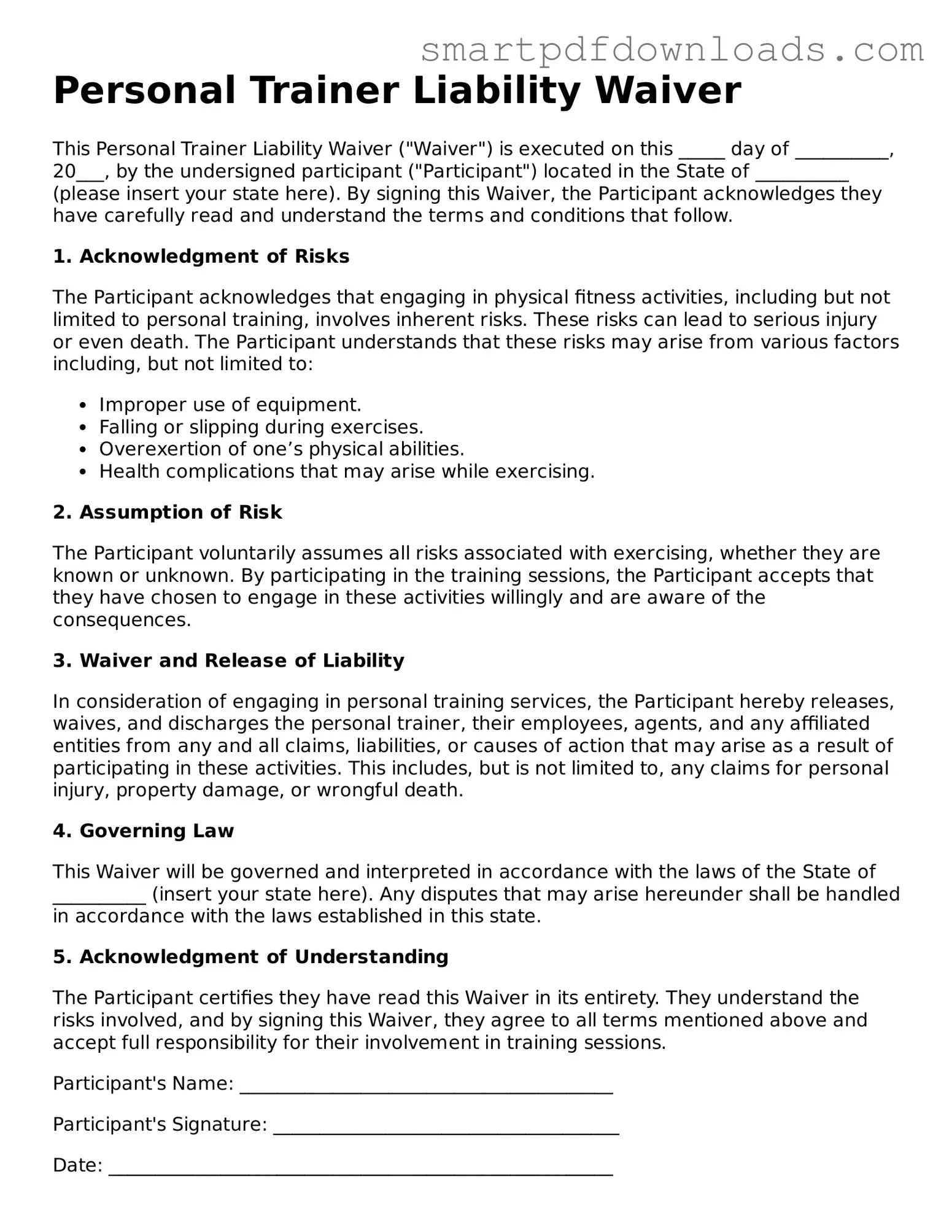Personal Trainer Liability Waiver
This Personal Trainer Liability Waiver ("Waiver") is executed on this _____ day of __________, 20___, by the undersigned participant ("Participant") located in the State of __________ (please insert your state here). By signing this Waiver, the Participant acknowledges they have carefully read and understand the terms and conditions that follow.
1. Acknowledgment of Risks
The Participant acknowledges that engaging in physical fitness activities, including but not limited to personal training, involves inherent risks. These risks can lead to serious injury or even death. The Participant understands that these risks may arise from various factors including, but not limited to:
- Improper use of equipment.
- Falling or slipping during exercises.
- Overexertion of one’s physical abilities.
- Health complications that may arise while exercising.
2. Assumption of Risk
The Participant voluntarily assumes all risks associated with exercising, whether they are known or unknown. By participating in the training sessions, the Participant accepts that they have chosen to engage in these activities willingly and are aware of the consequences.
3. Waiver and Release of Liability
In consideration of engaging in personal training services, the Participant hereby releases, waives, and discharges the personal trainer, their employees, agents, and any affiliated entities from any and all claims, liabilities, or causes of action that may arise as a result of participating in these activities. This includes, but is not limited to, any claims for personal injury, property damage, or wrongful death.
4. Governing Law
This Waiver will be governed and interpreted in accordance with the laws of the State of __________ (insert your state here). Any disputes that may arise hereunder shall be handled in accordance with the laws established in this state.
5. Acknowledgment of Understanding
The Participant certifies they have read this Waiver in its entirety. They understand the risks involved, and by signing this Waiver, they agree to all terms mentioned above and accept full responsibility for their involvement in training sessions.
Participant's Name: ________________________________________
Participant's Signature: _____________________________________
Date: ______________________________________________________
Emergency Contact Name: ____________________________________
Emergency Contact Phone Number: ____________________________
Please return this signed Waiver to your personal trainer before your first training session.
